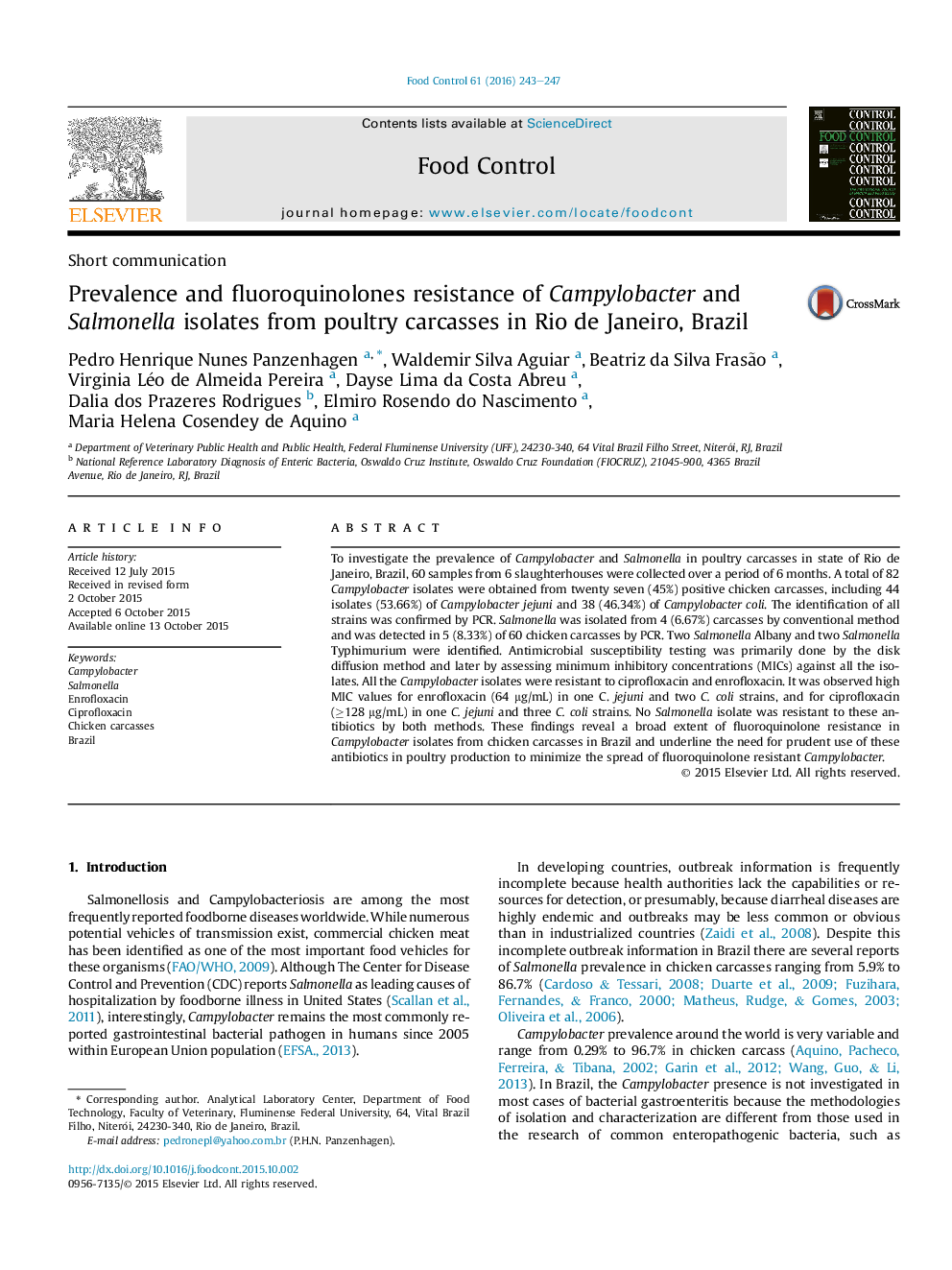| Article ID | Journal | Published Year | Pages | File Type |
|---|---|---|---|---|
| 4559124 | Food Control | 2016 | 5 Pages |
•We propose to investigate Salmonella and Campylobacter in chicken carcasses.•Campylobacter isolates were much more frequent than Salmonella.•All Salmonella serotypes were sensitive to ciprofloxacin and enrofloxacin.•We revealed high contamination with fluoroquinolone-resistant Campylobacter.•Public health authorities should be alert about these enteric bacteria in poultry.
To investigate the prevalence of Campylobacter and Salmonella in poultry carcasses in state of Rio de Janeiro, Brazil, 60 samples from 6 slaughterhouses were collected over a period of 6 months. A total of 82 Campylobacter isolates were obtained from twenty seven (45%) positive chicken carcasses, including 44 isolates (53.66%) of Campylobacter jejuni and 38 (46.34%) of Campylobacter coli. The identification of all strains was confirmed by PCR. Salmonella was isolated from 4 (6.67%) carcasses by conventional method and was detected in 5 (8.33%) of 60 chicken carcasses by PCR. Two Salmonella Albany and two Salmonella Typhimurium were identified. Antimicrobial susceptibility testing was primarily done by the disk diffusion method and later by assessing minimum inhibitory concentrations (MICs) against all the isolates. All the Campylobacter isolates were resistant to ciprofloxacin and enrofloxacin. It was observed high MIC values for enrofloxacin (64 μg/mL) in one C. jejuni and two C. coli strains, and for ciprofloxacin (≥128 μg/mL) in one C. jejuni and three C. coli strains. No Salmonella isolate was resistant to these antibiotics by both methods. These findings reveal a broad extent of fluoroquinolone resistance in Campylobacter isolates from chicken carcasses in Brazil and underline the need for prudent use of these antibiotics in poultry production to minimize the spread of fluoroquinolone resistant Campylobacter.
